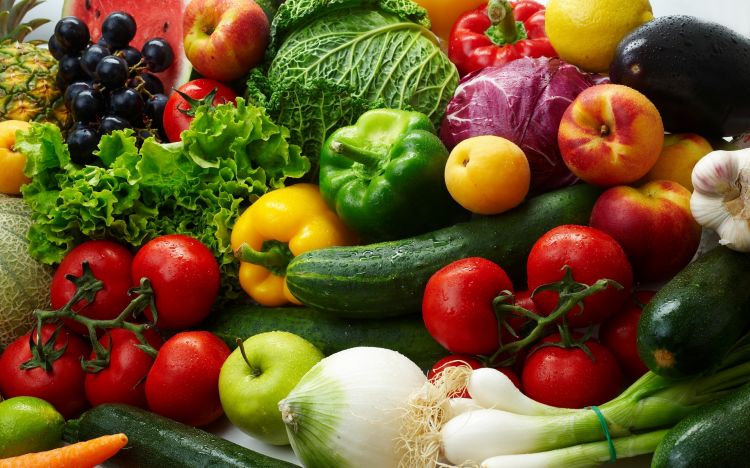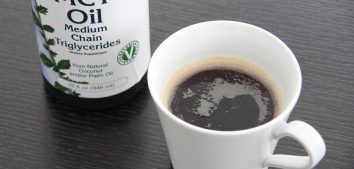
FAT DISSOLVABLE VITAMINS
Many biochemical reactions constantly take place within our organisms. Food is a building block for our tissue. It is also transferred into energy.
This process is very sophisticated and for it to work well – special substances are required. Those substances were named ‘vitamins’ by a Polish scientist Kazimierz Funk in 1911.
When people hear ‘vitamins’ they imagine a colorful pill. Mass production of cheap vitamin supplements started several tens of years ago. Pharmaceutical industry still makes a lot of money out of synthetic and OTC vitamins. Supplementation did a lot of good – it almost made rickets, scurvy and other avitaminosis disappear. However, there still are countries in which food is not rich enough in vitamins what causes many medical conditions.
Those conditions do not need to be a threat for us. By eating conciously we provide our organisms with the right amount of nutrients. As thery are not synthetic, they will be assimilated easily. It’s not that difficult to provide our organisms with the right amount of vitamins and minerals. But taking supplements without any medical consultation may be harmful.
>Vitamin A
It is a group of organic compounds, that includes retinol, retinal, retinoic acid, and several provitamin A carotenoids, and beta-carotene.
Main functions:
- Cuticle and skin building
- Essential for vision
- Keeping epithelial cells stable
- Adrenal cortex hormones synthesis
- Thyroxine secretion from thyroid
- Keeping myelin sheaths in the right state
- Taking part in red blood cells building
Retinol can be found in animal source foods while provitamins A come from plant foods. Fish oil is the product that is the most vitamin A-rich. Carotenoids can be found in yellow, orange and red vegetables and fruit and also in vegetables‘ leaves. Liver, tuna, eel, eggs, butter and mature cheese are also very rich in retinol. The amount of nutrient loss during cooking isn’t that big – around 25%.
Vitamin A is very oxygen-sensitive.
How vitamin A is used depends on your diet. Good proteins in the right amount (10-20%) increase its intestinal absorption and further transportation. Too much of unsaturated fatty acids in your diet increases the need for vitamin A. Whereas not enough of zinc makes retinol-binding protein syntheis harder. Iron’s amount is also crucial as it decreases the bioavailability of carotene.
Vitamin A deficiency may be caused by its absence in everyday’s diet or absorption disorders. It is very hard to recognize because our organisms are usually supplied with it and the effects are delayed. Dry skin and goosebumps are usually the first symptoms of deficiency. Lacrimal glands begin to function badly and eyeballs loose lucidity. Nyctalopia may occur. Changes similar to those happen in airways, digestive tract and urinary tract. Immune system is also weakened.
Hypervitaminosis can also be harmful. Symptoms:
- Heaviness
- Muscle weakness
- Growth inhibition
- Loss of appeite
- Skin ulceration
- Baldness
- exophthalmos
- swelling of eyelids
- hemorrhage
As you can see – common sense is essential. It is particularly important nowadays when synthetic supplements are easily available and added even to milk and fat.
>Vitamin D
This one is special. All adults, besides pregnant women and breastfeeding moms, are able to produce Vitamin D from its provitamin that is contained in our skin. Vitamin D works similarly to hormones – its metabolites are synthesised in kidneys and then transported to tissue and bones by blood. Then, they are stocked in our fat tissue and skeletal muscles.
Main functions:
- critical for building bones
- enhances calcium and phosphorus absorption
- keeps the right balance between calcium and phosphorus
- stimulates calcium release from bones
- keeps the right level of calcium in plasma
Vitamin D deficiency may lead to rachitis and osteoporosis (adults). But excessive amounts of vitamin D are also harmful. It’s possible to take too much if you eat supplements or food rich in vitamin D.
Food contains trace amounts of vitamin D (mainly cod liver oil, some grains and plant oils). It can also be found in oily fish, milk, dairy products and cereal products.
>Vitamin E (tocopherol)
The name is a mix of two greek words: tokos – birth and phero – to carry. Vitamin E is an antioxidant so it combats free radicals. It also prevents vitamin A and polyunsaturated fatty acids from oxidation. Vitamin E is transported from intestines to lymph and when it is binded with lipoproteins it moves further to adrenal glands, testicles, mucous gland, blood platelets and fat tissue.
Main functions:
- being the basic antioxidant
- atherosclerosis prevention
- tumor prevention
- cell membrane stability
Vitamin E deficiency is not a common phenomenon. It usually happens when someone suffers from malabsorption.
The main source of vitamin E are plant oils, but it can also be found in cereal products and vegetables. The amount of nutrient loss caused by cooking is quite considerable. Heavy metals and rancid fat break it down completely. Oils lose 70% of vitamin E during refining. Vegetables lose tocopherol during drying.
>Vitamin K
It is crucial for blood-clotting and protein synthesis.
The main source of Vitamin K are the green parts of vegetables – they contain as much vitamin as chlorophyll. Chlorophyll-free plants are short in vitamin K or K1 (acquired from plants) to be precise. Vitamin K2 has similar properties, but -contrary to K1 – it is produced by some microorganisms. Bacteria in the digestive tract synthesise this vitamin.
Main functions:
- crucial for blood-clotting
- necessary for bone protein binding
- keeps the right amount of calcium in our bones
- works like an antifungal and antibacterial drug
Vitamin K deficiency is uncommon. It is quite a stable vitamin. Its amount contained in plants differs and depends on whether or not the plant is ripe. The amount of nutrient loss caused by cooking is not considerable.










Comments No Comments
Join the discussion…